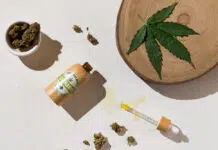Launching a new product can be exciting and daunting. It’s the moment you’ve been waiting for – to release your product to the market. But what if no one buys it?
This is only likely to happen if you haven’t done enough marketing beforehand. If you want people to buy your product as soon as it goes on sale, you need to make people aware of your product. More than that – you need to build up buzz.
This involves not just spreading awareness of your upcoming product, but turning your product launch into a thrilling event. You should want customers to be intrigued in your product and to feel that they need to be the first to experience your product. You could even accept pre-orders and start collecting revenue now before your product is even out.
Below are just some of the different tactics you can use to start building up buzz before your product launch. The earlier you start, the more anticipation you can build up.
Release teaser ads
Teaser ads can build up a sense of mystery by revealing small amounts of new information about your new product in the lead-up to its release. There are different types of teaser ads that you can consider:
- You could consider hanging up posters or billboards with a launch date and some limited information about your product
- Alternatively, you could post images or videos to your social media pages that similarly contain the launch date and limited information
- You could post designs or concept art for your product. Alternatively, you could provide small glimpses or even post a silhouette of your product.
- You could post a behind-the-scenes video showing the making of your product without revealing what the final product looks like. This could be followed up later on with another video in which you reveal the product.
Post progress updates on social media
Social media is a great platform for building up buzz because you can post regular updates and treat it like a news bulletin. These updates could help to build up suspense towards the launch date.
Such updates could start during the initial design stages through to testing and finally the release itself. Use related hashtags to help attract people to your social media updates. You could even create your own hashtag related to your product launch.
As you release each update, consider pinning the most important ones to the top of your social media page. When people visit your social media pages, they can then see how close you are to the launch.
Make sure that you’re also engaging in social media in other ways. Interacting with others and posting non-promotional content will help you amass followers and help fill the content gaps when you may not have any updates to share.
Send out press releases
You may be able to drum up some media attention for your upcoming product by sending out press releases to online news outlets, blogs, magazines, and podcasts. This press release should contain exciting information about your product that makes bloggers and podcasters want to talk about it.
Your press release could be centered wholly around your product yourself, or you could find a more unique spin. For example, you could conduct a study with some interesting results and then link this to your upcoming product (such as a study on people’s favorite ice cream flavors that link to your upcoming ice cream product).
Press releases nowadays are typically sent via email – although you can mail physical press releases. You’ll need to do a lot of research in order to find relevant media contacts and their email addresses. It’s possible to hire a company to write a press release for you and carry out a digital PR campaign. This could get more effective results – as PR companies generally already have the copywriting skills and the connections. However, DIY PR will save you money.
Get promo from influencers
Influencers have become a key component of digital marketing. They are individuals who have a large online following – which could include popular bloggers, social media celebrities, or renowned YouTubers.
Many of these influencers are willing to promote products on their platforms in exchange for payment. However, the product needs to be something that they are happy to promote (i.e. the product needs to be relevant to their platform without creating a conflict of interest).
There are online marketplaces where you can connect with influencers. Those who have a bigger following may be more fussy about the product they promote and will likely expect larger sponsorship payments. Therefore, you may want to stick to smaller influencers.
Sponsoring an influencer to promote your product could help to secure more pre-orders in the lead-up to the launch. Seeing that someone influential has endorsed your product can create trust in your product. That said, it needs to be an influencer that your target audience can connect with.
Not all influencers will be willing to promote products that have not yet been released. Giving them early access to your product so that they can experience it for themselves could instill confidence that your product is worth promoting. You could even give them your product for free as part of the deal.
Demo/sample your product
Allowing people to watch demos of your product or test out your product for themselves could further encourage them to place an order. There are different ways in which you can demo or sample a product, depending on the type of product.
- With software, you can allow people to test out beta versions or trials with limited features. Video walkthroughs could also show people how the software works.
- With food products, consider letting customers taste samples. Events like food fairs can be a great opportunity to let people sample your product. Alternatively, if you have a store or a restaurant, you can allow people to sample your food here.
- With products like gadgets, you could consider releasing demo videos of you using them. Alternatively, you could attend trade shows and let customers try out gadgets or show them how to use them.
- Clothing and accessories may be possible to demo at fashion shows or fashion fairs. You could use models or you could simply use mannequins and allow people to feel the fabric and materials.
Put a limit on pre-orders
Accepting pre-orders allows you to get a better idea of the demand for your product so that you know whether your marketing is working. If you’re not getting any pre-orders, you can then adjust your marketing so that you’re not wasting time and money on ineffective tactics.
Pre-orders can also be a marketing tactic in themselves – especially if you put a limit on pre-orders. This can create a sense of scarcity that could encourage customers to pre-order in fear of missing out.
Some companies even allow customers who pre-order to get early access to their products. Allowing a privileged few people to receive your product a day or a week early could create a sense of exclusivity that could also encourage sales.
Run a social media contest
Contests are another great way to build up some hype. This could be a raffle-style contest in which a lucky winner gets your product for free. Many people will be drawn to the idea of being able to get something for free and will sign up, helping to spread awareness of your product.
While you can run contests at trade shows or through your website, social media is often the best place to advertise contests. You could even pay to run a social media advert for your contest that leads to a contest sign-up page on your site.
Add a countdown to your website
You can also get people excited about your launch by placing a countdown on your website homepage. This could count down the days, hours, and seconds until your product becomes available.
Countdowns are a simple way to build up suspense, but you need to be sure that once the timer reaches zero you are all ready to go.
Organize a launch party
You can turn your product launch into a physical event by hosting a launch party. This could be an event in which you invite family, friends, business partners, and various influential people (such as online influencers, local journalists, or local fellow business owners). You could even invite customers who pre-order your product to your party.
This party should be fun but professional. Feel free to supply food and live music, but make sure that your product is the main event. You could even sell products there and then at your launch party.
Consider a launch discount
Some companies will offer a limited-time discount on their product for a week or two after the launch. This can help to attract customers looking for a bargain.
Just consider the fact that sales may severely drop off once you increase the price. However, it will give you a chance to accumulate reviews.
Advertise this discount in advance and emphasize that it’s for a limited time. An alternative option could be to only offer a discount to a limited number of people who pre-order.





